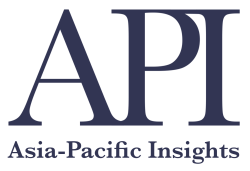Insights from Washington | “China-centered unified command” is a dream worth pursuing in PH-Japan-US trilateral

By Rodney Jaleco | Date 03-29-2024
WASHINGTON D.C. — Japan announced early this month it will be deploying F-35 Lightning VTOL fighters on its two helicopter carriers – the first time they’ll be flying fixed-wing aircraft from carriers since the end of World War II.
The decision was a reflection of the growing fears about China, and how her neighbors are scrambling to face the threats they pose.
When US State Secretary Antony Blinken visited Manila on March 18, he announced that the White House would convene a trilateral summit comprising Philippine President Ferdinand Marcos Jr., Japanese Prime Minister Fumio Kishida, and President Joe Biden on April 11 – ostensibly to discuss expanded trade and technology cooperation – but also widely seen as a venue to build a common front against Chinese aggression and expansionism.
In July 2023, the three countries’ foreign ministers met for the first time on the sidelines of an ASEAN Regional Forum in Jakarta, Indonesia, and again at the UN General Assembly that September.
Coast Guards from the three countries held their first joint training exercise in June.
Japan, which used to watch only as observers, is expected to participate in the upcoming Balikatan war games in the Philippines.
President Marcos Jr. had sortied recently to Germany and Eastern Europe, again with an official economic cover.
He went home with an equal measure of business deals and expressions of support in its worsening squabble with China.
The Philippines has made sovereignty and China’s aggressiveness in the West Philippine Sea a centerpiece of foreign relations.
Japan, which has its own territorial disputes with China, and the United States – which sees China as its chief strategic competitor – have found a willing ally in the Philippines, playing catch-up to the rest of the militaries of Southeast Asia while continuing to wage a half-century-old insurgency war against Maoist rebels.
Under an accord tracing its roots to the pro-Western administration of the late Benigno Aquino III, the Enhanced Defense Cooperation Agreement (EDCA) allows the US to “rotate” forces and stockpile weapons and supplies in selected Philippine military bases. President Marcos Jr., early on, green-lighted additional EDCA sites closer to the two expected flashpoints, with China – Taiwan in the north and the Spratly Islands in the west.
During the waning days of the pro-China Rodrigo Duterte administration, the two allies forged the “Joint Vision Statement for a 21st Century US-Philippine Partnership” that reiterates not only the improvement of defensive capabilities to respond to “geopolitical tensions…especially in the maritime areas” and “promote the inter-operability of US and Philippines armed forces” but also the development of “joint command and control capability for operations.
A recent Reuters report said a joint command in Japan will be unveiled at the trilateral summit in Washington next month. The report said Tokyo has expressed “serious concern” over China and its threats to Taiwan, just 100 kilometers from Japanese territory. Unlike in South Korea, where US and South Korean forces can operate under a unified command, the highest-ranking US official in Japan is only a three-rank general – the plan involves appointing a four-star American general to match the rank of the Japanese counterpart in the new headquarters, Reuters said.
What the US and Japan plan for the Philippine military is unclear, but defense leaders could clarify this as the summit draws closer.
While the Philippine armed forces have minimal capabilities and resources, they possess perhaps the most important element of warfighting – proximity to the battlefield.
“With closely aligned interests, shared alliance ties with the US, and geographical proximity, the US-Philippines-Japan triangle is a natural grouping that has been waiting for its political moment,” wrote Brian Harding in a Washington-based Institute of Peace publication.
The Philippines and the United States already have a semblance of a unified command for large-scale training, such as the Balikatan exercises.
However, expanding this capability to operations entails risks and opportunities, not to mention substantial logistical and practical impediments. It’s mainly aspirational and conceptual at this stage.
In at least one of the rotation and resupply (RORE) missions for the BRP Sierra Madre at Ayungin (2nd Thomas) Shoal earlier this year, a P-8 Poseidon maritime patrol plane was spotted flying overhead (it was unclear whether it was US or Australian).
An operations-focused unified command between the Philippines and its allies implies the deployment of capabilities the Philippines does not yet have or never will. If only for that, it may be worth taking up at the PH-US-Japan summit in Washington.
Tags: Security
